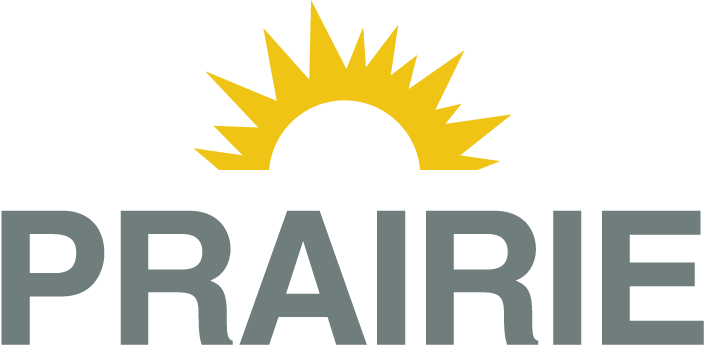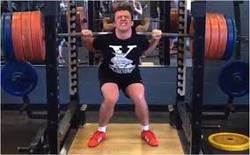Knee Valgus

The Who: We see this a lot in the female population and a lot more in athletes that are long legged. Sometimes the long slender legs tend to create more play in the hip socket and underdeveloped legs can fall victim to this dysfunction.
The Why: Based on recent research, there are multiple factors contributing to this “excessive” internal rotation and adduction. Some of this research suggests weakness, lack of firing, and alterations in motor control of the gluteal muscles. Some studies related to knee valgus also imply over-activity of hip adductors. As one would suspect, pain and dysfunction will lead to changes in muscle activity, motor control, joint motion and flexibility. But in the case of knee dysfunction, a strong correlation was found between knee valgus during squatting and landing tasks, and future ACL injuries in female athletes.
The Approach: An integrated training model that includes intervention to correct compensation patterns, as well as, stability, power and agility training to compliment traditional strength exercises results in better performance than traditional isolated strength training. Not all athletes are big fans of foam rolling, stretching, mobilizing, activating, core conditioning, and working on stabilization, but the alternative could be injury and decreased performance, and I don’t know a single athlete who is a fan of performing poorly or being side-lined by injury.
Athletes don’t have to spend an entire session doing corrective exercise if they use corrective exercise as their warm-up before every training session. What we do in ESP is bundle athlete’s flexibility, core and traditional warm-up time, and replace it with a circuit of exercises (10 – 20 minutes) that are aimed at optimizing the way they move. Look at it simply as this: Athletes have 2 choices before they start training – improve the quality of human movement and optimize mechanics, or spend 10 minutes on a treadmill reinforcing their compensation patterns.
Physical Applications (forgive the scientific terms)
- Decrease activity of adductors and the TFL
- Decrease activity of calf and ankle evertors
- Mobilize the hip
- Increase dorsiflexion range of motion
- Increase activity and strength of the gluteal muscles
- Increase activity and strength of the invertors of the ankle
- Increase neuromuscular control of lower extremity
- Integrate new movement pattern
Ankle Eversion
This is a movement in which the foot collapses inwards, and the feet flatten out to some degree:
The Who: If we were to guess the amount of athletes we work with that have feet that pronate in some way shape or form, I would say it is upwards of 70%. In fact it is so prevalent that we have several exercises in our exercise database that we prescribe if we notice this dysfunction in an athlete.
The Why: By standing with your feet in a collapsed position, or moving and allowing your feet to collapse, you are putting the rest of the body in a weaker and more exposed posture. By having an arch that collapses in, it can increase the chance of injury while also causing a loss in power, and because most sports are played while on our feet it becomes a high priority in correcting.
An everted (pronated) foot exposes the body to such problems as, but not limited to:
Plantar fasciitis, Knee problems (especially ACL tears), IT band tightness, Ankle problems, Bone spurs, Achilles tendonitis.
The Approach: When we work with an athlete that is having any kind of issue, we start to look at their body positions and movement patterns first. Then we address their flexibility. A foot that pronates is just one of those postures, or movement patterns that we look for, and work to correct.
For an everted foot, strengthening & rolling out the arches, finding proper shoe inserts (for both your activities of daily living and your athletic movements) and even working on how to transfer weight properly will help create a more appropriate movement pattern of the ankle.
We will also use closed kinetic chain exercises (where the foot is in contact with the ground) and open kinetic chain exercises (where the foot is not in contact with the ground) to correct the function of the lower body.
Poor Ankle Mobility

There are a couple of ways to find out if you have stiff ankles:
- Perform a basic air squat a few times and have someone watch you. A telltale sign of poor mobility is if your heels routinely come off the ground.
- Stand straight with your feet together. Can you lift the balls of your foot off the ground without moving your body?
- Kneel on the ground and assume a position similar to stretching your hip flexors, with one knee on the floor. Your lead foot that you are testing should be lined up 5 inches from the wall. From this position, start to lean in towards the wall while keeping your heel on the ground for as long as possible. This position allows you to measure the tibia angle in relation to the ground and measure the distance of the kneecap from the wall when the heel starts to come up. If the kneecap can touch the wall from 5 inches away, you have good mobility in the ankle.
There are two movements that the ankle can perform: plantarflexion and dorsiflexion. Plantarflexion is the movement or pointing of the toes downwards (like a ballerina going on to her tip toes). Dorsiflexion, as you might imagine, is it’s opposite. This is when you lift the ball of the foot with the heel in contact with the ground, as if you were pulling your foot upwards towards your knee. Now, the reason why dorsiflexion is considered to be the most important of the degrees of freedom of the ankle is because it allows for the tibia (the shin) to move forward, relative to the position of the foot. This is crucial for correct body positioning and the efficient production and application of force.
The Why: Poor dorsiflexion can be attributed to a number of factors. These include:
- Flexibility issues with the Gastroc/Soleus complex (muscles of the calf).
- Ankle joint restriction. This can be due to a tight joint capsule and/or scar tissue and adhesions in the joint from prior injuries or surgeries.
- Anterior pelvic tilt posture. Bad posture (how often do you slouch when you’re sitting at your desk?) brings the body’s center of mass forward, which causes the ankle to plantar flex in an attempt to balance it out.
- Other injuries in the lower body. If an athlete is experiencing knee, hip or back pain as well as any other muscle soreness in the lower body, they will instinctively limp or modify their movement to avoid discomfort. Doing so will cause the ankle joint to tighten and limit it’s range of motion.
- Frequently wearing shoes with elevated heels. Most shoes have a heel that is slightly higher than the front of the shoe, so wearing them excessively will result in a progressive loss of flexibility.
The Approach: Here are a number of exercises to help get you started:
Self myofascial release on the foam roller. Grab a foam roller and sit on the ground. Place one leg on the roller, just above the ankle, and the rest the base of the heel of your free leg on your toes. Roll up and down the entire length of your calf and Achilles’ tendon for 1 minute. If you hit a tender spot (you’ll know if you do), pause and focus on this area for 10-20 seconds. The great thing about this exercise is that you can turn your body to the side and hit both the medial and lateral aspect of your calf, and you can add in active movements during the rolling such as actively dorsiflexing the foot or performing ankle circles.
Squat with elevated toes. This is a simple and quick drill that is easy to perform. Simply place your toes on a slight incline (like two 5lb plates) and move into dorsiflexion by bending your knees. Increase the incline as you progress.
Knee to wall drill. We explained this above when we tried to have you see if you had tight ankles. As the name suggests, have your foot 3-5 inches away from a wall. Lean forward with your heel staying in contact with the floor. If you can touch your knee to the wall, you are doing pretty good. If you can’t keep your heel on the ground or touch the wall, then you may need to complete this drill on a daily basis to create some more flexibility.



